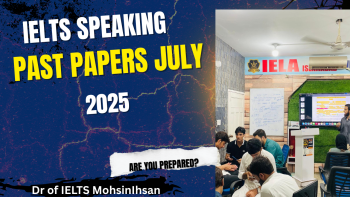
IELTS Heading Finding Questions
Topic 01 : “The Evolution of Public Transportation in Mega-Cities”
Read the passage below and match each numbered paragraph (A–E) with the most suitable heading (i–vii). There are two extra headings you won’t use.
Paragraph A:
This section traces the origins of public transport systems, from horse-drawn wagons and early steam-powered trams, to the emergence of municipal bus networks, highlighting how increased urbanization necessitated new commuting solutions.
Paragraph B:
Prior to recent decades, congestion, pollution, and inefficiency were common challenges. However, with the advent of modern technologies such as GPS and real-time tracking, many cities transformed their bus and metro systems into highly responsive services—reducing wait times and improving coverage.
Paragraph C:
Funding for public transportation has varied: some cities rely on farebox recovery, while others depend on government subsidies. Public-private partnerships emerged as an innovative model—attracting private investment while retaining public oversight.
Paragraph D:
In many Asian mega-cities, bicycle-sharing and rapid electric minibuses have become popular supplements to traditional subway systems. These flexible options help overcome “last-mile” issues in densely populated neighborhoods, offering affordability and convenience.
Paragraph E:
Future projections suggest self-driving shuttles, hyperloop corridors, and integrated smart-city data platforms may redefine urban transit—connecting ride-sharing, bike-share, metro, and even drone taxis into seamless on-demand networks.
------
Headings List :
i. Predicted next-gen transportation solutions
ii. Diverse funding models for public transit
iii. Historical roots of mass transit
iv. Emerging alternative commuter modes
v. Innovations in traffic management technologies
vi. Impacts of urban sprawl on mobility
vii. Environmental consequences of city transport
Answers:
-
Paragraph A → iii. Historical roots of mass transit
-
Paragraph B → v. Innovations in traffic management technologies
-
Paragraph C → ii. Diverse funding models for public transit
-
Paragraph D → iv. Emerging alternative commuter modes
-
Paragraph E → i. Predicted next-gen transportation solutions
Topic-02 : “The Role of Sleep in Cognitive Performance”
Read the text below and match each paragraph (A–E) with the correct heading (i–vii). Two extra headings are provided.
---
Paragraph A
Although once thought to be a passive state, sleep is now understood to be an active process during which the brain consolidates memories, clears metabolic waste, and restores neural pathways. These functions are vital for sustaining attention and complex problem-solving during waking hours.
Paragraph B
A number of high-profile studies have shown that even moderate sleep restriction—reducing rest by just one or two hours per night—can impair decision-making and increase error rates. Yet many professionals continue to underestimate the cognitive toll of consistent mild deprivation.
Paragraph C
In an experiment comparing athletes who received extended sleep with those on standard schedules, reaction times, accuracy, and mood scores all improved significantly in the extended-sleep group. This suggests performance benefits beyond simply avoiding tiredness.
Paragraph D
While adequate rest is crucial, its effects vary between individuals. Genetics, age, and lifestyle factors all influence how much sleep is optimal for peak mental performance, leading researchers to reject a “one-size-fits-all” recommendation.
Paragraph E
Technology is beginning to play a role in sleep research. Wearable devices and brain-imaging tools allow scientists to measure subtle changes in sleep architecture, potentially opening new avenues for personalized interventions.
---
Headings List :
i. How insufficient sleep harms judgement
ii. Why sleep is no longer viewed as idle downtime
iii. Technology’s growing role in understanding rest
iv. Differences in optimal sleep needs
v. Sleep and athletic performance advantages
vi. Societal attitudes towards oversleeping
vii. Clearing the brain’s waste during the night
---
Paragraph A → ii. Why sleep is no longer viewed as idle downtime
Paragraph B → i. How insufficient sleep harms judgement
Paragraph C → v. Sleep and athletic performance advantages
Paragraph D → iv. Differences in optimal sleep needs
Paragraph E → iii. Technology’s growing role in understanding rest
Unused headings:
vi. Societal attitudes towards oversleeping
vii. Clearing the brain’s waste during the night




